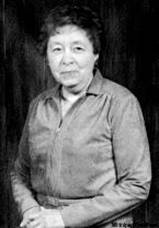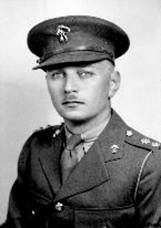Web Contents:
HKVCA Web Help:
External Links:
Veterans Affairs
Canada
War Amps
Military and Related Sites
BOD Only (password required)
![]()
March 2, 2009
The View from the West
They also serve who stand and wait
By: Tom Ford
 Doris
Mitchell was a wife, mother and Second World War hero -- even though she
never left her Winnipeg bungalow.
Doris
Mitchell was a wife, mother and Second World War hero -- even though she
never left her Winnipeg bungalow.
Mitchell's husband, Vaughan, a lieutenant in the Winnipeg Grenadiers, was among the first Canadian soldiers to see action during the Second World War. He died as the result of one of our nation's greatest military blunders.
In December 1941, Mitchell and the 1,975 members of "C" Force were sent to help the British defend Hong Kong against a Japanese invasion. "C" Force was poorly trained and ill-equipped. More than that, their position was hopeless; the Japanese tide could not be held back.
As a kid, I saw Doris Mitchell at family Christmas parties. I vaguely remember her -- calm, quiet and displaying a certain strength. She only found out officially about her husband's death at the end of the Second World War, four years after the Hong Kong battle.
"When you're young, you think someone is going to come up your sidewalk one day and say something good about your dad," says Barry Mitchell, now 70, Doris's only child.
"She tried to keep my life as normal as possible," he says. "'We are not going to be melancholy,' she'd say."
 She
kept Vaughan's photo in the front room, but there were no other outward
signs of what she was going through.
She
kept Vaughan's photo in the front room, but there were no other outward
signs of what she was going through.
Today, Barry, a Winnipeg-based transportation expert, is treasurer of the Hong Kong Veterans' Commemorative Association, which is raising money to build a 12-foot-long, black granite memorial wall at King Edward Street and Sussex Drive, across from the National Research Council in Ottawa.
On each side of the wall will be listed the names of those from the Royal Rifles of Canada and the Winnipeg Grenadiers who fought at Hong Kong. Barry's father was captured and herded into a garage with other prisoners.
A shell blew out part of the roof, injuring some men, including Vaughan's kid brother, Eric. Vaughan refused to leave him. The other men were marched away to a labour camp. They never saw the pair again.
So far, the association, which can be reached at P.O. Box 381, Winnipeg, Man., R3C 2H6, has raised $ 134,438 for the wall, nearly all of it from individual gifts. It needs about $50,000 more and hopes to dedicate the wall on Aug. 15, 2009, V-J Day.
"C" Force is another sad example of our neglect of our military. Doris Mitchell got a pension of $78 a month. She didn't go out to work because, like many women at the time, she thought her job was to raise her child.
It took decades before the Hong Kong vets got the medical benefits they needed. The last pension was granted in August 2001. The vets also wanted compensation from the Japanese for the slave labour they performed, and an official apology for the inhumane treatment they received.
Finally, in December 1998, a settlement was paid, but only to the 350 vets and 400 widows still living. The payment was not from the Japanese, but from the Canadian government. To this day, Japan has still not apologized specifically to the veterans.
The vets got involved in Hong Kong because then prime minister Mackenzie King was trying to impress the Brits. Political pressure forced King to appoint a royal commission to investigate the Hong Kong battle. The sole commissioner, Chief Justice Sir Lyman Duff, did not properly treat the evidence and exonerated the politicians and Defence Department.
A later study by Gen. Charles Foulkes, then chief of general staff, found many mistakes in Duff's work, but said "C" Force never had a chance against overwhelming odds. Which is exactly why the Brits did not use their own troops to reinforce Hong Kong.
Doris Mitchell died in 1988 at the age of 82, still living in her bungalow.
I have one thought for the commemorative association: perhaps a small mention might be made on the wall about the wives and relatives of those in "C" Force.
Because they're also heroes.
Tom Ford is managing editor of The Issues Network.
Hong Kong by the numbers
1,975 Canadian soldiers in "C" Force left for Hong Kong in October 1941.
One soldier died at sea.
290 were killed in action, of which 283 are buried in Sai Wan Bay War Cemetery.
264 died as prisoners.
1,420 returned to Canada.
Source: Hong Kong Veterans' Commemorative Association

